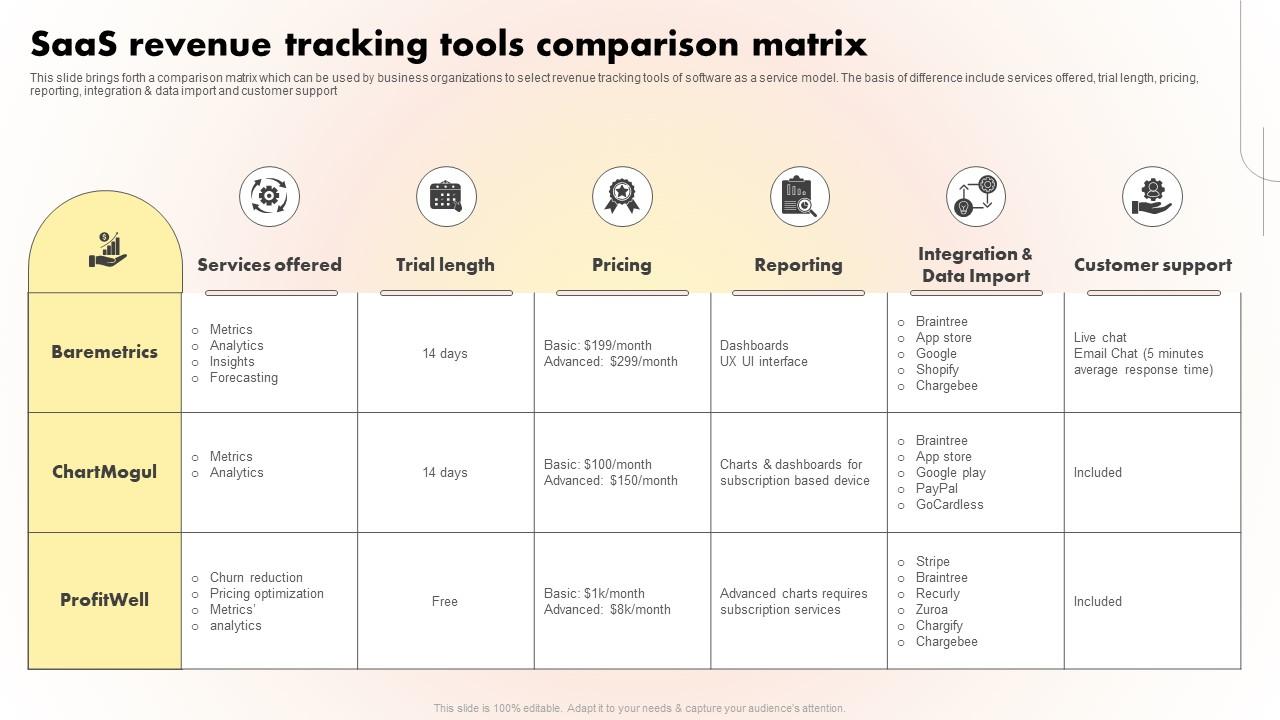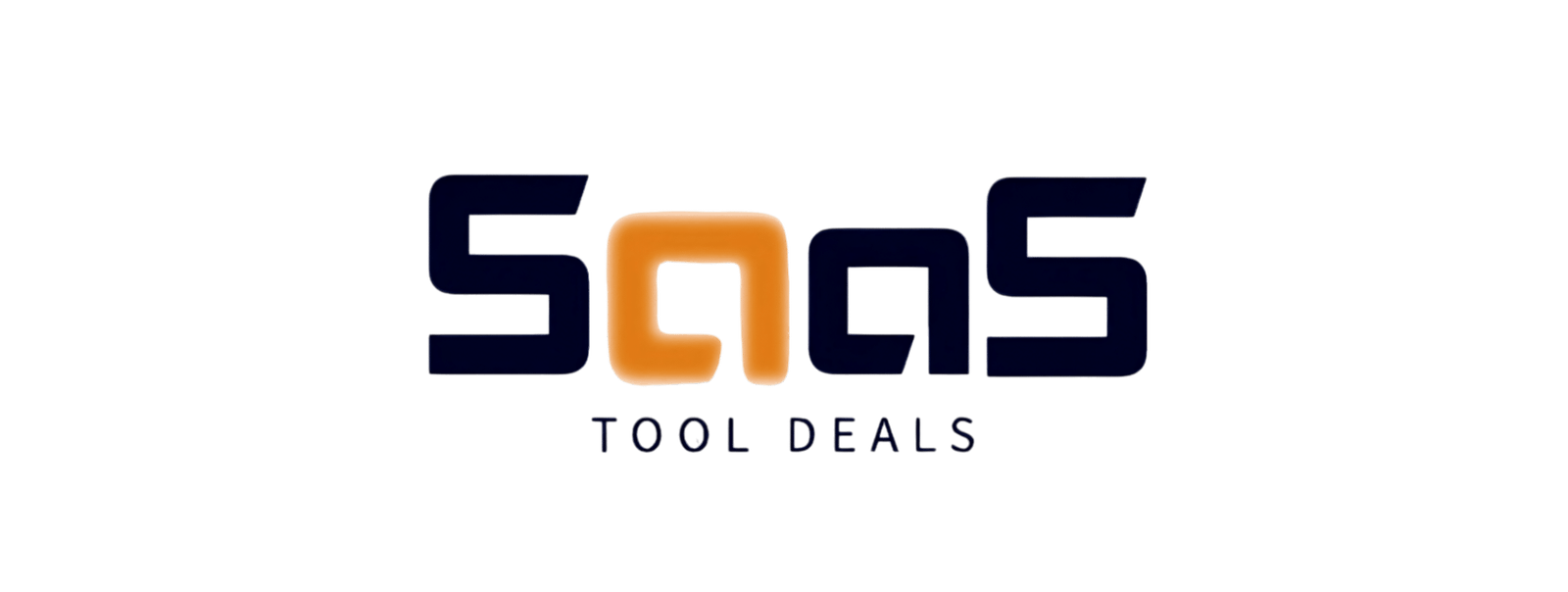SaaS tools have revolutionized the way businesses operate. They offer a wide range of solutions for different needs.
In today’s fast-paced digital world, choosing the right SaaS tool can make or break a business. From project management to customer relationship management, SaaS tools simplify tasks and enhance productivity. But with so many options available, it can be overwhelming to decide which one fits your business best.
This comparison will help you understand the key features, benefits, and drawbacks of popular SaaS tools. By the end, you’ll have a clearer idea of which tools align with your goals. Whether you’re a startup or an established company, making an informed choice is crucial. Let’s dive into the comparison of SaaS tools to find the perfect match for your needs.

Table of Contents
Introduction To Saas Tools
Software as a Service (SaaS) tools have transformed the business landscape. They offer a wide range of applications that help businesses run efficiently. In this blog post, we will explore the importance of SaaS tools in business. We will also compare various SaaS tools available in the market.
What Are Saas Tools?
SaaS tools are software applications hosted on the cloud. They are accessible via the internet. This means users do not need to install or maintain the software on their own devices. SaaS tools cover various business needs such as:
- Customer Relationship Management (CRM)
- Project Management
- Accounting and Finance
- Human Resource Management (HRM)
- Marketing Automation
These tools are typically subscription-based. Users pay a monthly or annual fee to use the software. This model provides flexibility and scalability for businesses of all sizes.
Importance Of Saas In Business
SaaS tools play a crucial role in modern business operations. They offer several benefits including:
- Cost Efficiency: No need for expensive hardware or software installations.
- Accessibility: Access your data from anywhere with an internet connection.
- Scalability: Easily scale your software needs as your business grows.
- Automatic Updates: Receive the latest features and security updates automatically.
Let’s break down the importance of SaaS tools with a simple table:
| Benefit | Explanation |
|---|---|
| Cost Efficiency | Reduces the need for upfront capital investment. |
| Accessibility | Enables remote work and real-time collaboration. |
| Scalability | Adjust resources based on current demand. |
| Automatic Updates | Stay updated with the latest features without manual intervention. |
In summary, SaaS tools are essential for improving efficiency and productivity. They support various business functions and help save time and money.
Top Saas Tools In The Market
With a wide variety of SaaS tools available, choosing the right one can be challenging. This section highlights the top SaaS tools that have made a significant impact. We will look at leading providers and emerging solutions.
Leading Saas Providers
Here are some of the most reputable SaaS providers:
- Salesforce: A robust CRM platform that helps businesses manage customer relationships. It offers a range of features including sales automation, customer service, and marketing automation.
- Microsoft Office 365: A comprehensive suite of productivity tools. It includes Word, Excel, PowerPoint, and Outlook. Office 365 is essential for collaboration and communication.
- Google Workspace: Formerly known as G Suite, it offers cloud-based productivity and collaboration tools. Key features include Google Docs, Sheets, Slides, and Gmail.
- Slack: A powerful communication tool that enhances team collaboration. It provides channels for group discussions and direct messaging.
- Zoom: A leading video conferencing tool that supports virtual meetings, webinars, and online events. It is known for its ease of use and reliability.
Emerging Saas Solutions
New SaaS solutions are continually emerging. These tools are gaining popularity and making waves in the market:
- Airtable: A flexible platform that combines the functionality of spreadsheets and databases. It is great for project management and content planning.
- Notion: An all-in-one workspace for notes, tasks, and databases. It is highly customizable and suitable for individuals and teams.
- Monday.com: A work operating system that helps teams plan and execute projects. It offers visual project management and workflow automation.
- Asana: A project management tool that allows teams to track their work. It helps in organizing tasks, setting priorities, and meeting deadlines.
- Freshdesk: A customer support software that improves customer service. It offers ticketing, automation, and self-service capabilities.
The table below compares some of the key features of these emerging solutions:
| SaaS Tool | Key Features | Use Case |
|---|---|---|
| Airtable | Spreadsheets, Databases, Collaboration | Project Management, Content Planning |
| Notion | Notes, Tasks, Databases | Workspace, Personal Organization |
| Monday.com | Visual Project Management, Workflow Automation | Team Planning, Project Execution |
| Asana | Task Tracking, Prioritization, Deadlines | Team Coordination, Task Management |
| Freshdesk | Ticketing, Automation, Self-Service | Customer Support, Service Management |
Key Features Of Saas Tools
SaaS tools are becoming vital for businesses of all sizes. They offer many features that help improve productivity and efficiency. This section will cover the key features that make SaaS tools stand out.
User-friendly Interfaces
A significant feature of SaaS tools is their user-friendly interfaces. These interfaces are designed to be intuitive and easy to navigate. This ensures that users can quickly learn and use the software without extensive training. Here are some common elements:
- Simple navigation menus
- Clear and concise buttons
- Interactive dashboards
These features help users to perform tasks efficiently and with ease. A well-designed interface reduces the learning curve, saving time and resources for businesses.
Scalability Options
Scalability options are crucial for growing businesses. SaaS tools provide flexible plans that can scale with your needs. This means you can start with a basic package and upgrade as your business expands. Some common scalability features include:
| Feature | Description |
|---|---|
| Flexible Pricing | Choose a plan that fits your current needs and budget. |
| Customizable Features | Add or remove features as needed for your business. |
| User Management | Easily add or remove users as your team grows. |
Scalability ensures that you only pay for what you need. This makes SaaS tools cost-effective for both small and large businesses.
Security Measures
Security measures are paramount in SaaS tools. Protecting your data is a top priority. SaaS providers implement various security protocols to ensure your information is safe. Key security features include:
- Data Encryption: Ensures that your data is safe during transmission.
- Regular Backups: Protects your data from loss or corruption.
- User Authentication: Ensures that only authorized users can access your data.
These measures help to build trust and ensure compliance with industry standards. A secure SaaS tool protects your business from potential threats and data breaches.
Benefits Of Using Saas Tools
Software as a Service (SaaS) tools offer many advantages for businesses. These tools help streamline operations, save money, and enhance productivity. Below, we will explore the key benefits of using SaaS tools.
Cost Efficiency
One of the main benefits of SaaS tools is cost efficiency. Companies save money on hardware and software installations. With SaaS, there’s no need for expensive servers. Moreover, SaaS tools usually have a subscription model. This means you only pay for what you use.
- No upfront costs
- Flexible pricing plans
- Reduced maintenance expenses
Accessibility
SaaS tools provide excellent accessibility. Users can access these tools from anywhere with an internet connection. This is ideal for remote work. Employees can work from home or while traveling. All they need is a device and internet access.
- Work from any location
- Supports remote teams
- Easy collaboration
Automatic Updates
SaaS tools offer automatic updates. This means the software is always up-to-date. There is no need to manually install updates. This saves time and ensures you always have the latest features.
- Always use the latest version
- No manual update hassles
- Improved security with frequent updates
Comparing Pricing Models
When selecting a SaaS tool, pricing models are crucial. Different models suit different needs. Understanding these models helps in making the best choice. This section covers two main pricing models: Subscription Plans and Pay-As-You-Go Options.
Subscription Plans
Subscription plans are common in SaaS tools. They offer predictable costs. Businesses pay a fixed amount monthly or yearly.
There are typically three tiers:
- Basic: Limited features, low cost.
- Standard: More features, moderate cost.
- Premium: All features, higher cost.
Here’s a table to illustrate:
| Plan | Features | Cost |
|---|---|---|
| Basic | Limited | $10/month |
| Standard | Moderate | $30/month |
| Premium | All features | $50/month |
Pay-as-you-go Options
Pay-As-You-Go options are flexible. Users pay based on usage. This model suits variable needs. Businesses only pay for what they use. Costs fluctuate with usage.
Advantages include:
- Flexibility: Pay for actual usage.
- No long-term commitment.
- Scalable with business growth.
Disadvantages include:
- Unpredictable costs.
- Potential for higher expenses.
- Requires careful monitoring.
Understanding these options is key to choosing the right SaaS tool. Consider your needs and budget before deciding.

Integration Capabilities
Understanding the integration capabilities of SaaS tools is crucial. These capabilities determine how well your chosen tool will work with other systems. Let’s dive into the key areas of integration: Third-Party Integrations and API Support.
Third-party Integrations
Third-party integrations allow SaaS tools to connect with other software. This can save time and reduce errors. For instance, integrating a CRM with an email marketing tool can automate customer follow-ups. Here are some popular third-party integrations:
- Zapier: Connects with over 2,000 apps, automating workflows.
- Slack: Seamlessly integrates with project management tools for better communication.
- Google Workspace: Syncs with various tools for enhanced productivity.
Choosing a SaaS tool with robust third-party integrations is essential. It ensures you can streamline your operations.
Api Support
API support is another critical aspect of SaaS tool integration. An API (Application Programming Interface) allows different software to communicate. This can be particularly useful for custom integrations. Here are some benefits of API support:
- Customization: Tailor the tool to meet your specific needs.
- Scalability: Easily integrate new systems as your business grows.
- Automation: Reduce manual tasks by automating processes.
When evaluating SaaS tools, check their API documentation. Good API support can significantly enhance your system’s efficiency.
| SaaS Tool | Third-Party Integrations | API Support |
|---|---|---|
| Tool A | Extensive (Zapier, Slack, Google Workspace) | Comprehensive API documentation |
| Tool B | Limited (only a few key integrations) | Basic API support |
In summary, understanding the integration capabilities of SaaS tools can help you make an informed decision. Look for tools that offer both third-party integrations and strong API support.
Customer Support And Service
Customer support and service are crucial factors when comparing SaaS tools. Users need help quickly. They also need clear instructions to solve problems. Good support can make the difference between a great experience and a frustrating one.
24/7 Support Availability
Not all SaaS tools offer 24/7 support. Some provide support only during business hours. This can be a problem if you work late or on weekends. Tools with round-the-clock support ensure help is always available.
Here is a table comparing support hours for popular SaaS tools:
| Tool | Support Hours |
|---|---|
| Tool A | 24/7 |
| Tool B | 9 AM – 5 PM (Weekdays) |
| Tool C | 24/7 |
| Tool D | 8 AM – 8 PM (Weekdays) |
Knowledge Bases And Tutorials
A good knowledge base is like having a library at your fingertips. It contains articles, FAQs, and guides. Users can find answers without waiting for support.
Tutorials are also essential. They offer step-by-step instructions. This helps users understand how to use the tool effectively.
Here are key features to look for in a knowledge base:
- Searchable database
- Video tutorials
- Detailed articles
- Frequently Asked Questions (FAQs)
Some tools also provide community forums. Users can share tips and solutions. This adds another layer of support.
In summary, when choosing a SaaS tool, consider the quality of customer support and service. 24/7 availability and comprehensive knowledge bases are critical. They ensure you get the help you need, whenever you need it.

Case Studies And Success Stories
Case studies and success stories highlight the real-world impact of SaaS tools. These examples show how businesses use SaaS to achieve their goals. Let’s explore some inspiring stories.
Businesses Benefiting From Saas
Many businesses benefit from SaaS tools. They use them for various purposes like customer management, marketing, and project management.
| Business | Industry | SaaS Tool | Outcome |
|---|---|---|---|
| Acme Corp | Retail | Shopify | 50% increase in sales |
| Beta Ltd | Healthcare | Salesforce | 30% boost in customer retention |
| Gamma Inc | Finance | Slack | Improved team communication |
Real-world Examples
Here are some real-world examples of businesses that have thrived using SaaS tools:
- Acme Corp: Acme Corp, a retail giant, used Shopify to enhance its online store. They saw a 50% increase in sales within six months.
- Beta Ltd: Beta Ltd, a healthcare provider, adopted Salesforce for customer relationship management. This led to a 30% boost in customer retention.
- Gamma Inc: Gamma Inc, in the finance sector, implemented Slack for internal communication. This improved team collaboration and productivity.
These examples illustrate how SaaS tools can transform businesses. They provide practical insights and inspiration for others to follow.
Future Trends In Saas
The Future Trends in SaaS are evolving rapidly. With advancing technology, SaaS tools are becoming smarter and more user-friendly. Companies are focusing on integrating new technologies to stay competitive and meet user expectations.
Ai And Machine Learning In Saas
Artificial intelligence (AI) and machine learning (ML) are transforming SaaS. These technologies offer powerful capabilities that enhance user experiences and streamline operations. Here are some key benefits:
- Automated Processes: AI can handle repetitive tasks. This saves time and reduces human error.
- Predictive Analytics: ML algorithms can analyze data trends. This helps in making informed decisions.
- Enhanced Security: AI can detect and respond to security threats. This keeps data safe and secure.
AI and ML in SaaS are not just for large enterprises. Small businesses can also benefit from these technologies. They make SaaS tools more efficient and effective.
Increased Personalization
Personalization is a growing trend in SaaS. Users expect customized experiences tailored to their needs. SaaS providers are using data to deliver personalized services. Here are some ways they do this:
- User Profiles: Collecting user data to create detailed profiles.
- Customized Dashboards: Providing dashboards that show relevant information.
- Tailored Recommendations: Suggesting features and tools based on user behavior.
Increased personalization leads to higher user satisfaction. It makes SaaS tools more intuitive and easier to use. This trend is likely to continue as technology advances.
| Trend | Impact |
|---|---|
| AI and Machine Learning | Automates tasks, enhances security, and provides insights. |
| Increased Personalization | Improves user satisfaction and engagement. |
Both AI and personalization are shaping the future of SaaS. They offer significant benefits to users and providers. Adopting these trends can help businesses stay ahead in the competitive SaaS market.
Frequently Asked Questions
What Are Saas Tools?
SaaS tools are software applications delivered via the internet. They allow users to access features online without installing software locally.
Why Use Saas Tools?
SaaS tools offer flexibility, cost savings, and scalability. They eliminate the need for hardware and reduce maintenance costs.
How To Choose The Best Saas Tool?
Identify your business needs first. Compare features, pricing, and customer support of different SaaS tools to find the best fit.
Are Saas Tools Secure?
Most SaaS providers implement strong security measures. Look for tools with data encryption, regular updates, and compliance with industry standards.
Conclusion
Choosing the right SaaS tool can boost your business efficiency. Consider your specific needs and budget. Evaluate features, customer support, and user reviews. Test a few options before making a decision. Remember, the best tool fits your business goals and scales with you.
By making informed choices, you ensure long-term success. Keep exploring and adapting to find the perfect SaaS solution. Stay updated with the latest trends and tools. Your business growth depends on smart software decisions.



Leave a Reply